

Hyper Rhizome # 7 2025 green mesh, grown root textile with patterns of car tracks and red cabbage. 400 cm x 250 cm
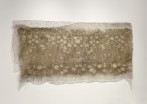

Hyper Rhizome # 11 2023 grown root textile on jute with patterns of microscopic plant structures and circles. 300 cm x 150 cm
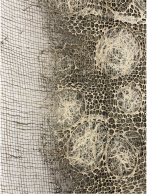

#3
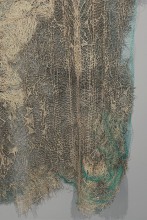

#4
Re – Constellations
Exhibition Director: Jinfei Ying
Artistic Director: Hui Shi
Co-Curator: Jun Jiang , Huang Yan , Assadour Markarov , Jia Xu
Assistant Curator: Junyu Li , Jiachen Liu , Zhe Ren , Chaowei Zeng
Participating Artists:
金守子(Kimsooja,韩国, 荒川医(Ei Arakawa,日本)易卜拉欣•马哈马(Ibrahim Mahama,加纳)朱利安·克鲁泽(Julien Creuzet,法国)(Aziza Kadyri,俄罗斯)赵素熙(Cho Sohee,韩国)崔真、夏因(Choi +Shine,美国)格尔加娜·塔巴科娃(Gergana Tabakova,保加利亚)卡里·迪尔达尔(Kari Dyrdal,挪威)阿齐扎•卡迪里(Aziza Kadyri,俄罗斯)凯特·伊根(Kate Egan,英国)莱昂纳多·奇亚奇奥 & 丹尼尔·贾诺内(Leonardo Chiachio & Daniel Giannone,阿根廷)莱昂纳多·乌利安(Leonardo Ulian,意大利)莱拉·卡德纳斯(Leyla Cárdenas,哥伦比亚)露西·奥尔塔 + 豪尔赫·奥尔塔(Lucy +Jorge Orta,英国)玛娜尔·阿尔多瓦扬(Manal AlDowayan,沙特阿拉伯)玛丽尔·克莱蒙特(Mariel Clarmont,法国)派翠西亚·伊斯塔柯(Patricia Perez Eustaquio,菲律宾)索尔维格·阿尔伯格(Solveig Aalberg,挪威)康瑞璟(Suki Seokyeong Kang,韩国)http://fiberarthangzhou.en.caa.edu.cn/2025/show_summary/zlgk/index.html
Der Wald und Wir -Arte Television about the exhibition Into the Woods at Kunsthaus Wien and the work of Rodrigo Arteaga, Julian Charrière, Marieken Verheyen, Diana Scherer and Isa Klee.
Arte TV – Twist
Climate Biennale Vienna April 5th 2024
Into the Woods – Kunsthaus Wien Museum Hundertwasser curator Sophie Hasslinger April 5th 2024


#1
Farming Textiles at Museum Kranenburgh has been included in the list of best exhibitions of 2023 by Dutch newspaper De Volkskrant.
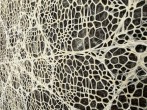

#1
Film about exhibition Farming Textiles 2023 -2024 Museum Kranenburgh
Avro Tros Kunst. Nu te zien!
https://npo.nl/start/serie/nu-te-zien/seizoen-8/nu-te-zien_49/afspelen
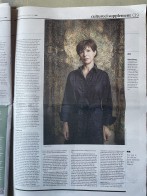

#1
Cultureel Supplement NRC
Lucette Ter Borg about the exhibition Farming Textiles in Museum Kranenburgh.
Dutch Television Avro Tros Kunst. Nu te zien!
https://npo.nl/start/serie/nu-te-zien/seizoen-8/nu-te-zien_49/afspelen
Volkskrant by Janna Reinsma *****
Trouw by Joke de Wolf
Radio
Nooit Meer Slapen
Springvossen


400 cm x 400 cm
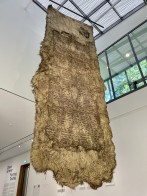

800 cm x 300 cm


#3
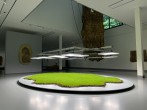

#4
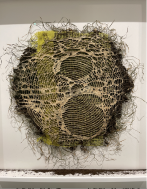

#5
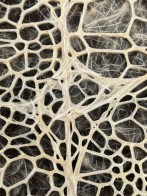

#6
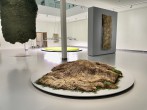

#7


600 cm x 400 cm
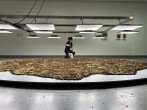

#9
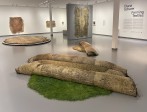

#10
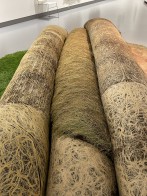

#11


#12
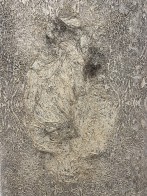

#13
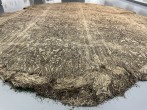

600 cm x 450 cm
1 Oct 2023 – 8 April 2024
In this solo exhibition, Farming Textiles, Diana Scherer reflects on humankind’s capacity and constraints in influencing nature while also highlighting the contemporary detachment between humans and the natural world. Farming Textiles showcases many recent works and features an installation of textiles ‘in the making’, allowing visitors to follow its growth process.
Curator Colin Huizing
Avro Tros Kunst Nu te zien!:
https://npo.nl/start/serie/nu-te-zien/seizoen-8/nu-te-zien_49/afspelen
https://www.kranenburgh.nl/tentoonstelling/129/diana-scherer-farming-textiles


#1
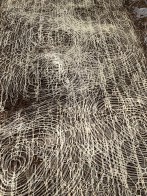

#2
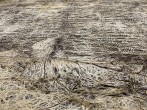

#3
6. Biennale Reset Now! August 6 2023
Invited are 27 national and international contemporary artists who work at the interface of science, technology and art. Their works integrate complex themes and techniques such as AI, cybernetics, augmented reality and bio art. The exhibition “resetNOW!” presents itself as an experiment on aesthetics and technology. The aim is to show synergies and competences and to present a multifaceted picture of artistic discourse and production. In doing so, the relationship between science, art and society as well as the dissolution of boundaries will be addressed. The works of the artists invite the visitors to a parcours that condenses this theme kaleidoscopically.
Artists: Alexandra Bircken, Birthe Blauth, Tatjana Busch, Louisa Clement, Ursula Damm, Jana Debrodt, Nausikaa Hacker, Kelly Heaton, Alexandra Hendrikoff, Barbara Herold, Franka Hörnschemeyer, Notburga Karl, Brigitte Kowanz, Alicja Kwade, Julia Lohmann, Peggy Meinfelder, Anna Pasco Bolta, Nana Petzet, Anne Pfeifer, Sophia Pompéry, Rasha Ragab, Diana Scherer, Susanne Schütte-Steinig, Selma Selman, Catharina Szonn, Susanne Wiegner and Anne Wodtcke.
